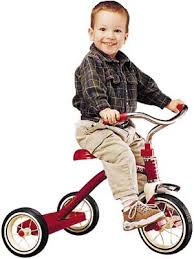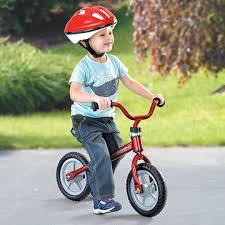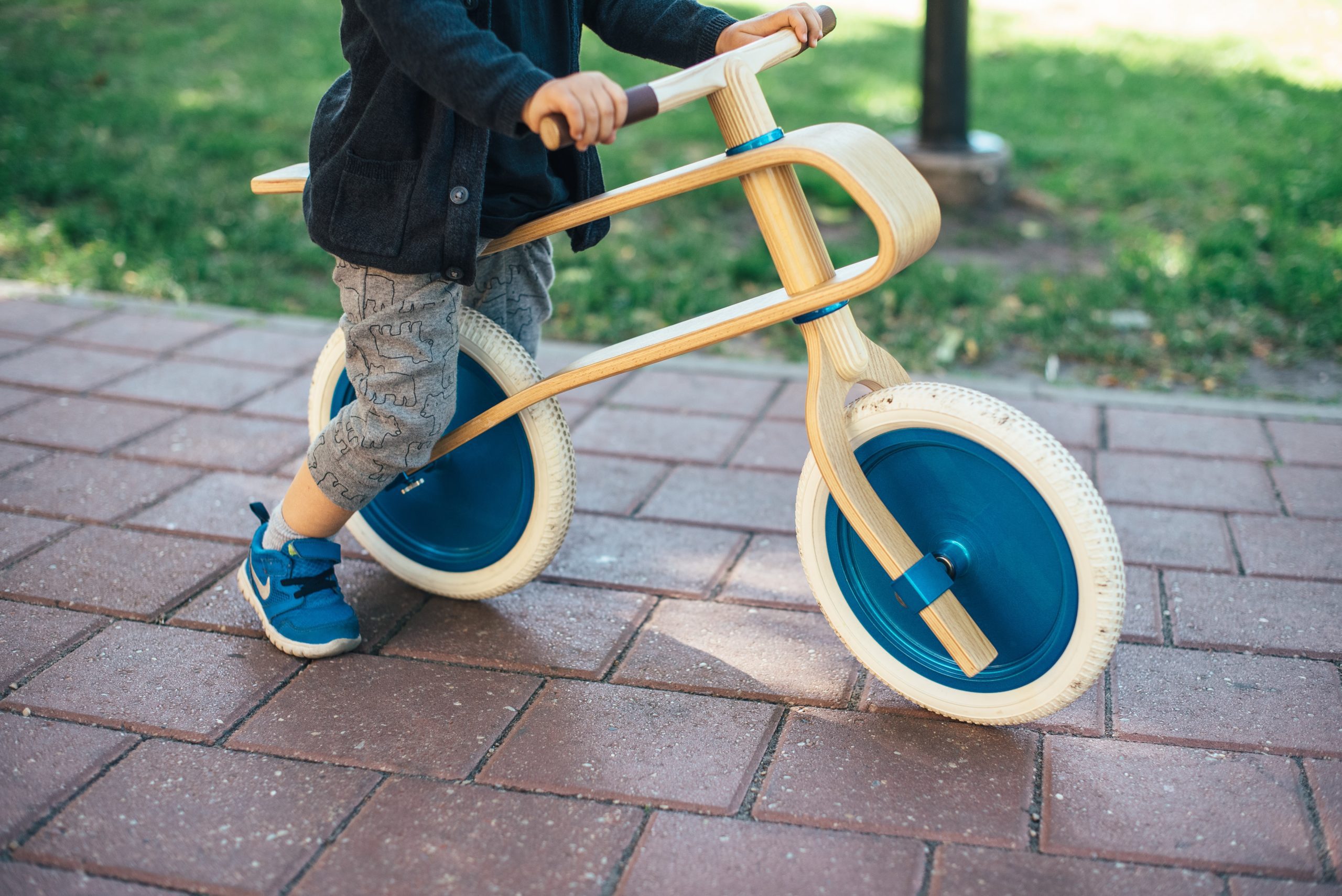Balance Bike or Tricycle?
By Teri Roberts, DPT, PCS
Kids Place Owner and Pediatric Physical Therapist
I often am asked whether purchasing a balance bike or a tricycle is a better investment for a two and a half year old. Truth is, there really is not a correct answer, so there is not a wrong choice. The balance bicycle and tricycle are both wonderful and fun activities that should encourage your child to play outside!
 A traditional tricycle has three wheels, giving it a wide base of support. The child sits on a fairly wide seat, allowing a vertical trunk, with wide handle bars and a solid pedal to place their feet. Children feel safe and balanced while moving the tricycle either by pedaling or propelling their feet on the ground. Developmentally, pedaling is not age appropriate until after age three. Children who are exposed earlier, and have normal development, are capable of pedaling at an earlier age. Children who have never had an opportunity to ride on a bike may not learn until closer to age four.
A traditional tricycle has three wheels, giving it a wide base of support. The child sits on a fairly wide seat, allowing a vertical trunk, with wide handle bars and a solid pedal to place their feet. Children feel safe and balanced while moving the tricycle either by pedaling or propelling their feet on the ground. Developmentally, pedaling is not age appropriate until after age three. Children who are exposed earlier, and have normal development, are capable of pedaling at an earlier age. Children who have never had an opportunity to ride on a bike may not learn until closer to age four.
Tricycle riding is an excellent early childhood activity that is fun, teaches spatial awareness (learning how to manipulate an object around the environment), increases lower extremity strength and endurance through pedaling, and allows for good motor planning when mounting and dismounting the tricycle safely.
The tricycle is very safe. A child will rarely fall off, mainly from the three wheels. However, when going down curbs and managing uneven surfaces, accidents do happen. It is always important to have your child wear a proper fitting helmet. Plus, it gets the child used to wearing a helmet when they transition to a 2-wheeler.
The newer balance bike only has two wheels (creating a narrower base of support), and a narrow seat. It also has a more streamlined handle bar, which creates a more forward trunk position, compared to the upright trunk position on a tricycle. Most importantly, the balance bike has no pedals. Therefore, the balance bike does not allow a child to learn how to pedal. Instead, it encourages the child to learn to balance on 2 wheels.
The balance bike also allows for increased lower extremity strength. The child has to propel through the surface hard enough to allow the bike to move fast in order to maintain balance. Lower extremity endurance can be increased if the child spends enough time riding the balance bike. Motor planning and spatial awareness also can be improved through the use of the balance bike.
Safety is a concern with a balance bike because of the narrow base of support and the requirement for the child to use their trunk to balance. Make sure that if you get your child a balance bike, you also gear them with a proper fitting helmet, never allowing them to ride without the head protection.
Neither bike is superior to the other, even though you will hear otherwise from passionate parents. Learning how to balance on a balance bike may help with teaching your child to ride a 2-wheel bicycle a few months earlier; however, most children are developmentally not ready to ride a bicycle until kindergarten or first grade. If you look into the future, you may not want to give your four year old an opportunity to take off on a 2-wheel bicycle since they may not be socially ready to learn all the rules of the road.
The most important factor in tricycle versus balance bike is to find the one that will encourage play through active movement. Your child will be very fortunate to have either a tricycle or a balance bike. If they are developing normally with their gross motor skills, regardless of a tricycle or bicycle, they will ultimately learn how to ride a 2-wheel bike with practice.
If you are concerned that your two or three year old is not ready for either a tricycle or a balance bike because you do not feel like their gross motor development is occurring at a normal rate, please call us make an appointment with our physical therapy team.


